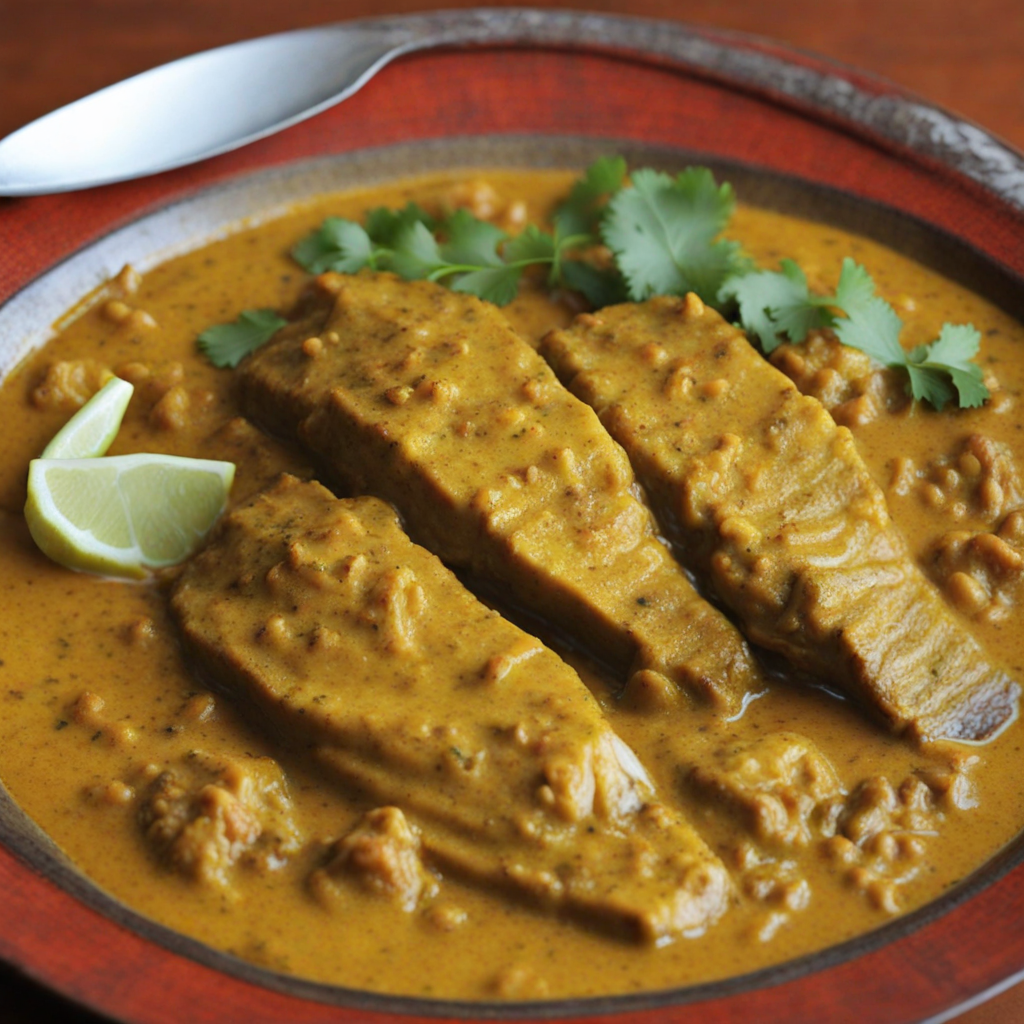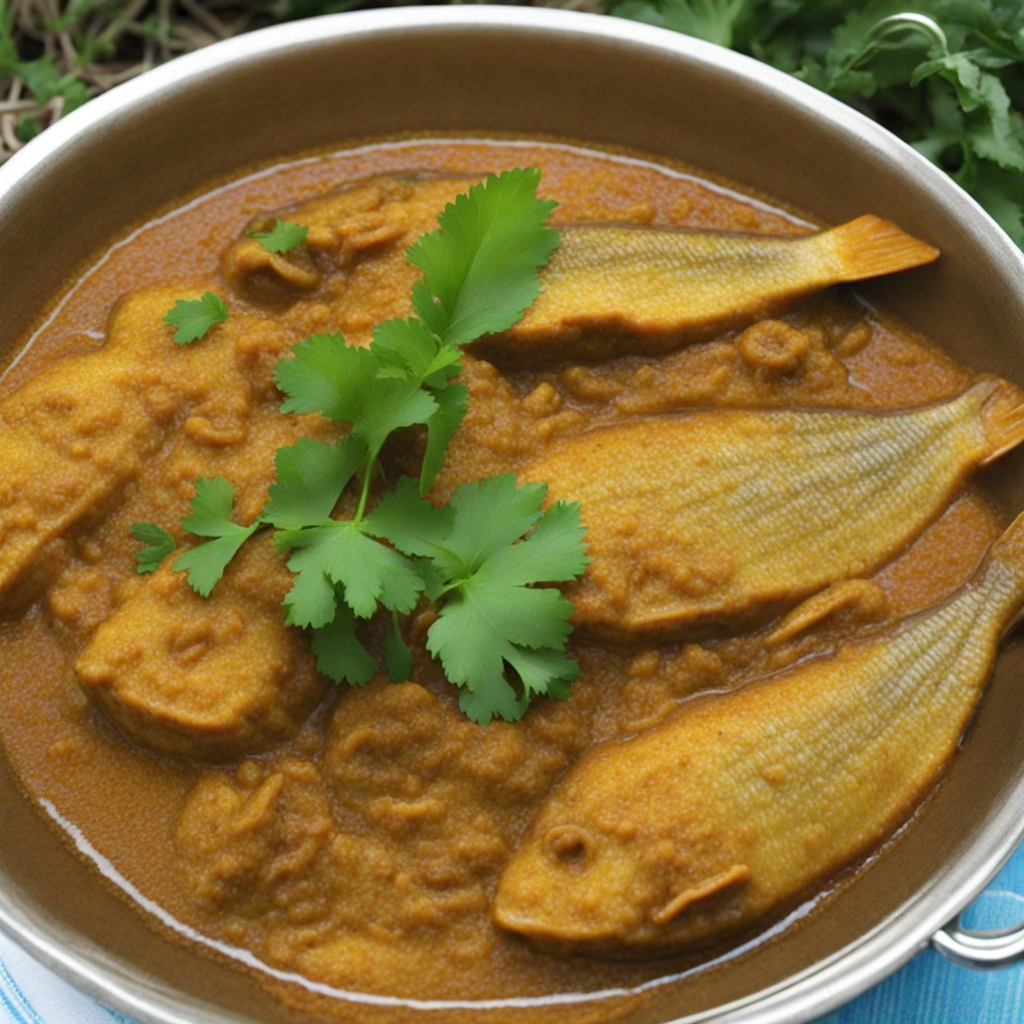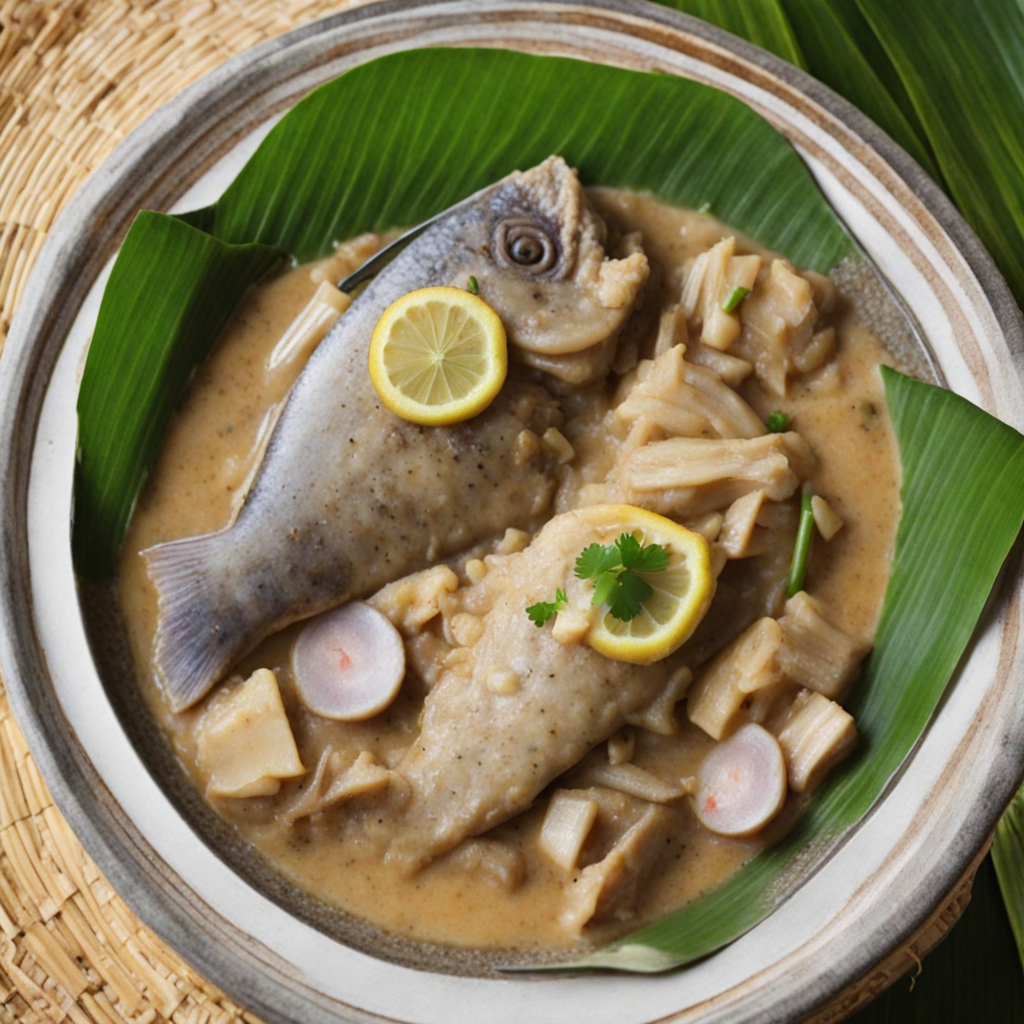Curried Fish
Curried Fish from the Solomon Islands is a vibrant and aromatic dish that beautifully blends the rich flavors of the ocean with the warmth of spices. The fish, typically fresh and locally sourced, is marinated in a mixture of coconut milk and a medley of spices, including turmeric, cumin, and coriander. This combination not only enhances the natural sweetness of the fish but also adds a creamy texture that envelops each bite in a luscious sauce. The use of coconut milk is a staple in many Pacific Island cuisines, and in this dish, it provides a delightful richness that balances the spices perfectly. As the fish simmers in its fragrant curry, the scent of fresh herbs like cilantro and green onions fills the air, inviting you to indulge in the culinary experience. Accompanied by a side of rice or traditional root vegetables, such as sweet potatoes or taro, Curried Fish becomes a wholesome meal that is both satisfying and nourishing. The dish is often garnished with a sprinkle of lime juice or fresh herbs, adding a zesty brightness that complements the deep flavors of the curry. Exploring Curried Fish is not just about tasting a new dish; it's about experiencing the vibrant culture and culinary traditions of the Solomon Islands. Each bite tells a story of the ocean's bounty and the island's rich agricultural heritage. This dish is a testament to the islanders' ability to create something extraordinary from simple, local ingredients, and it invites food lovers to savor the unique blend of flavors that define Pacific Island cuisine.
How It Became This Dish
The Engaging History of Curried Fish in the Solomon Islands The Solomon Islands, an archipelago in the South Pacific, is known not only for its breathtaking landscapes and vibrant cultures but also for its rich culinary traditions. Among these, curried fish stands out as a beloved dish that epitomizes the fusion of indigenous flavors with influences brought by colonialism and globalization. The story of curried fish in the Solomon Islands is a captivating journey through time, showcasing the islanders' adaptability, creativity, and cultural resilience. #### Origins and Early Influences To understand the origins of curried fish in the Solomon Islands, we must first appreciate the islands' diverse environment and the various cultures that have shaped its culinary landscape. The indigenous Melanesian population has relied on the abundant marine life surrounding the islands for sustenance for thousands of years. Fish has always been a staple in the local diet, often caught by hand or through traditional fishing methods. While fish dishes have deep-rooted significance in Melanesian culture, the introduction of curry to the Solomon Islands can be traced back to the 19th century, when European traders, missionaries, and colonial powers began to influence local cuisine. The British, in particular, played a crucial role in introducing spices and cooking techniques from their colonies in India, where curry had evolved into a complex and celebrated culinary tradition. As these influences permeated the Solomon Islands, fish—already a dietary staple—found a new companion in curry, creating a vibrant dish that combined the best of both worlds. The result was a fragrant and flavorful preparation that not only enhanced the taste of fish but also incorporated local ingredients, making it unique to the region. #### Cultural Significance Curried fish quickly became more than just a meal; it transformed into a symbol of cultural exchange and resilience. In the Solomon Islands, food is often imbued with deep cultural significance. Traditional meals are central to communal gatherings, celebrations, and rituals. Curried fish, with its bright colors and aromatic spices, has found a place in various cultural contexts, from family dinners to festive occasions. The dish also embodies the Solomon Islanders' adaptability and resourcefulness. Local cooks began incorporating indigenous ingredients such as coconut milk, fresh herbs, and native spices into their curry recipes. This not only created a distinctly Solomon Island flavor profile but also demonstrated the community's ability to merge traditional practices with new influences. For example, the use of coconut milk adds a creamy texture and a hint of sweetness that balances the spices, making curried fish a harmonious blend of flavors. Additionally, curried fish is often prepared as a communal dish, reflecting the significance of sharing food in Solomon Island culture. Meals are typically enjoyed together, fostering a sense of community and togetherness. The dish's versatility allows it to be served in various settings, from casual family gatherings to more formal celebrations, making it a beloved staple across the islands. #### Development Over Time As the Solomon Islands entered the 20th century, the culinary landscape continued to evolve. The effects of globalization and increased tourism brought about new influences, which further shaped the way curried fish was prepared and enjoyed. The introduction of new cooking techniques, kitchen appliances, and ingredients expanded the possibilities for local chefs and home cooks. In modern times, curried fish has become a popular dish not only among locals but also among tourists seeking to experience authentic Solomon Island cuisine. Restaurants and eateries across the islands have embraced this dish, often putting their own unique spins on it. Variations have emerged, with some incorporating local vegetables such as taro and sweet potato, while others experiment with different types of fish or even vegetarian alternatives. Moreover, the rise of the internet and social media has played a significant role in promoting the culinary heritage of the Solomon Islands, including curried fish. Recipes and cooking videos shared online have enabled a new generation of cooks to connect with their roots while also experimenting with traditional dishes. This has led to a resurgence of interest in local cuisine, encouraging younger generations to learn about their culinary heritage and the importance of traditional cooking practices. #### The Role of Culinary Festivals and Community Engagement Culinary festivals and community events in the Solomon Islands have further contributed to the preservation and promotion of curried fish as a cultural icon. Events such as the Solomon Islands Food Festival celebrate traditional cooking, showcasing local ingredients and culinary techniques. These gatherings not only highlight curried fish but also provide a platform for chefs and home cooks to share their culinary innovations and interpretations of this beloved dish. Such festivals foster a sense of pride in local cuisine and encourage the younger generation to appreciate their culinary heritage. They serve as a reminder of the importance of food in cultural identity, reinforcing the idea that meals are not just about sustenance but also about storytelling, tradition, and community. #### Conclusion The history of curried fish in the Solomon Islands is a beautiful tapestry woven from the threads of indigenous traditions and foreign influences. Its evolution from a simple fish dish to a symbol of cultural resilience and adaptability showcases the rich culinary heritage of the islands. As curried fish continues to be enjoyed in homes and restaurants alike, it stands as a testament to the collaborative spirit of the Solomon Islanders, who have embraced change while honoring their roots. Today, curried fish remains a cherished dish that reflects the vibrant culinary identity of the Solomon Islands, bridging the past with the present. As food historians and culinary enthusiasts continue to explore and celebrate this dish, it is likely to inspire future generations to engage with their culinary heritage, ensuring that the legacy of curried fish endures for years to come.
You may like
Discover local flavors from Solomon Islands







